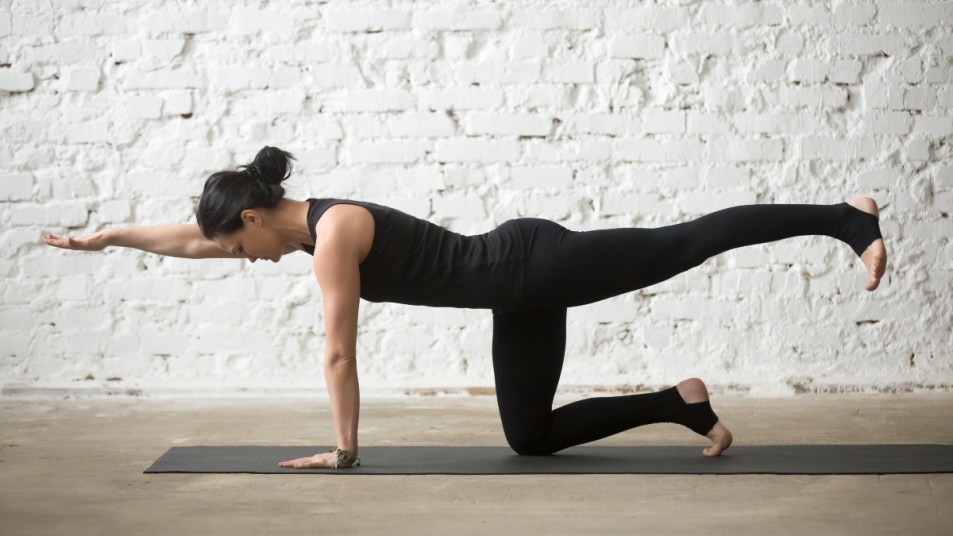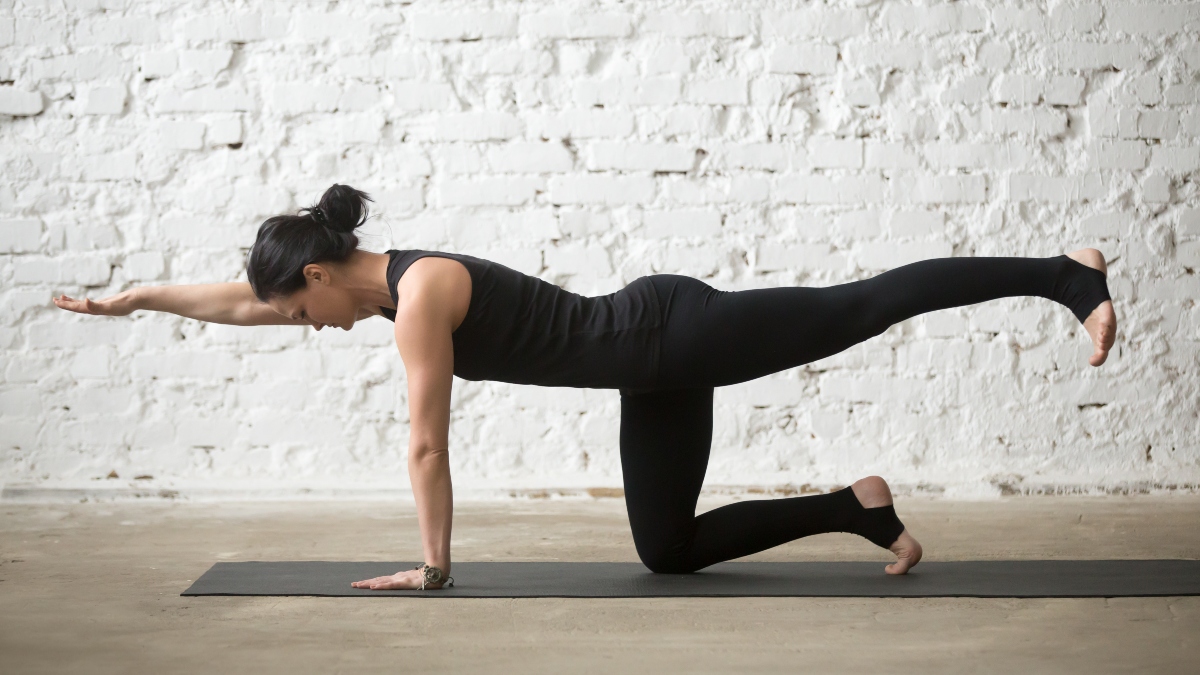50-Year-Old Pamela Brinker Struggled With Grief and Anxiety, Until She Tried Cross-Body Moves to Rewire Her Brain
During times of anxiety, messages in the brain don't flow as smoothly from one hemisphere to the other.

“Can this really be happening?” Pamela Brinker asked a dear friend, as she struggled to grasp the reality that she was a widow at age 50. The grief was relentless and overwhelming, and her anxiety became so intense that she could barely eat or sleep.
A psychotherapist, Pamela tried various therapeutic tools to stop the panic, but nothing worked. After two years of misery, she finally decided to try yoga again, a practice she had once loved.
As she began attending yoga sessions again, Pamela noticed she was less on edge after the classes that included “cross-crawl” poses — simple cross-body movements in which you reach across your body, such as touching your left knee with your right hand and vice versa. Because of her training as a therapist, Pamela understood the left-right brain relationship and how each hemisphere controls different body functions and the importance of them working together.
How Cross Body Movements Can Rewire the Brain

Upon further research, Pamela learned that during times of anxiety, messages in the brain don’t flow as smoothly from one hemisphere to the other. So, our ability to regulate emotion gets dampened and our feelings can become overwhelming. Cross-body or “bilateral” movements allow information to pass freely between the two sides of the brain, relieving anxiety.
Why does this work? Emotional trauma can alter the limbic system — or the areas of the brain that do the most emotional processing. The results can include overwhelming anxiety, loss of muscle control, and coordination and the inability of bodily systems to work together as a team.
The fix? Simply doing four minutes a day of cross-crawl, or bilateral, exercises can strengthen the limbic system to re-sync the brain’s ability to communicate — calming the mind, supercharging energy, releasing anxiety, and enhancing whole-brain thinking, says Loren Fishman, MD, director of Manhattan Physical Medicine and Rehabilitation. “Left-right movements release stress and quickly calm the mind,” she confirms.
How Cross-Body Movement Changed Pamela’s Life

As soon as she got up in the morning, Pamela began to do a simple move: She’d stand and reach her left hand down toward her right foot, extending her right hand up into the air, then she would switch sides, repeating a few times. Later in the day, if her worry or panic threatened to ruin lunch with a friend, Pamela excused herself to a bathroom to do a another simple cross-crawl movement: Standing up, she connected her right elbow to her left knee, then her left elbow to her right knee, repeating until she started to feel calmer. What she liked most was that she could do the moves anywhere, and started doing them throughout the day in the kitchen, at the office sitting in her chair, or even at the grocery store if she was hit by another wave of anxiety.

With each passing week, Pamela grew more resilient and rediscovered her peace, happiness, and focus. Today, at 61, Pamela says, “I still miss my husband, but left-right body exercises keep me grounded, peaceful, and joyful.”
A version of this article originally appeared in our print magazine, Woman’s World.












